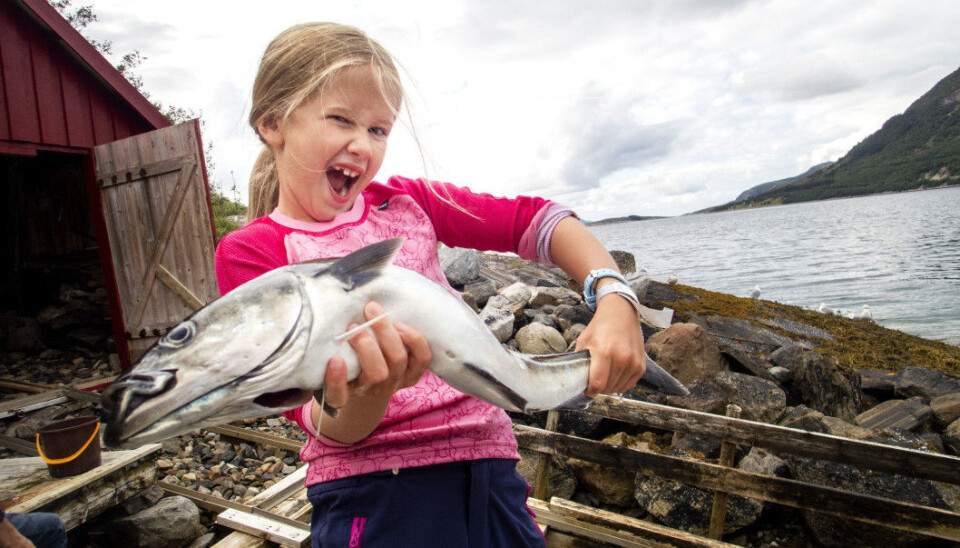
Scientists explain a fishy attraction to Norwegian waters
Complex mixing patterns and underwater waves that occur in specific locations drive productivity along Norway's coast, making them hotspots for certain fish and marine life.
Norway’s long serrated coastline harbours many secrets. Among them is why some places are far more productive when it comes to fish and marine life than others.
Using instrumented buoys and autonomous underwater vehicles that rely on technology similar to the Mars rover “Opportunity,” a team of researchers from the ENTiCE project now can what drives these big differences.
“There’s a lot we don’t know about our coast,” says Ingrid Ellingsen, a researcher at SINTEF Ocean in Trondheim, Norway, a key partner in the ENTiCE project.
“We also know very little about what forms the basis for the ecosystems that are found there. But we can now explain why some areas of our coast are so productive.”
Mixing waters
The researchers found that when two physical forces in the ocean work together in certain places along the coast, the result is an intense mixing of seawater.
This brings additional nutrients into the water column, which in turn affects the entire ecosystem by providing fuel for phytoplankton.
Phytoplankton form the basis of the marine food chain. They live where they can use photosynthesis to convert sunlight into the energy they need to survive and reproduce. Phytoplankton in turn are eaten by zooplankton, which then are eaten by fish.
Phytoplankton are often too small to see with the naked eye. But in high numbers they can turn the seawater green. Its ability to photosynthesise is probably the most important chemical reaction of its kind on the planet.
The ocean’s phytoplankton also produce perhaps as much as 90 per cent of all oxygen in the atmosphere.
Internal waves mix water
However, marine phytoplankton need nutrients such as nitrate, phosphate and iron for photosynthesis. This factor, combined with the physical conditions along the coast, helped explain why there are more phytoplankton in some places than others.
The researchers were based on the island of Froan, off the coast of Trøndelag County in mid Norway. Here, they were able to see first-hand some of the dynamics that attract fish to some areas and not to others.
“We found that the combination of strong tidal currents and waves make the waters off the island of Froan very productive,” Ellingsen said. “These processes bring extra-large amounts of nutrient-laden water to the area.”
The researchers also found that a particular phenomenon they call internal waves plays an important role in this process. Internal waves, also called underwater waves, are difficult to spot from the ocean surface. But researchers know these waves are formed in several places along the Norwegian coast.
Underwater waves are formed when powerful ocean currents pass through shallow areas and over subsea ridges on their way towards the coast.
These waves contain a great deal of energy, which causes water masses to mix vertically. This mixing brings up nutrients from deeper waters; in some cases the nutrients can be well distributed along the coast.
Life explodes in spring
Norway’s high-latitude location means that it is dark for most of the winter along the entire coast. But when spring comes and the light returns, marine life flourishes.
Phytoplankton grow explosively, triggering a feeding frenzy up the food chain. But as spring turns into summer, this explosive growth slows dramatically because the phytoplankton have used up all the nutrients.
But in places like Froan, the continual mixing of waters from the Atlantic’s depths provides a constant, rich supply of nutrients that continue to feed phytoplankton throughout the summer.
"The special thing about a place like the ocean around Froan is that there is a much larger supply of nutrients in the water than elsewhere along the coast,” Ellingsen said. “Now we know how and why that happens.”
Reference: Emlyn J. Davies, Ingrid Ellingsen, Matilde S. Chauton, Trygve Fossum, Martin Ludvigsen, Kristine B. Steinhovden, Zsolt Volent and Geir Johnsen: “ENabling Technology providing knowledge of structure, function and production in a complex Coastal Ecosystem (ENTiCE)”, Article in press.
----------------
Read more in the Norwegian version of this article at forskning.no






























